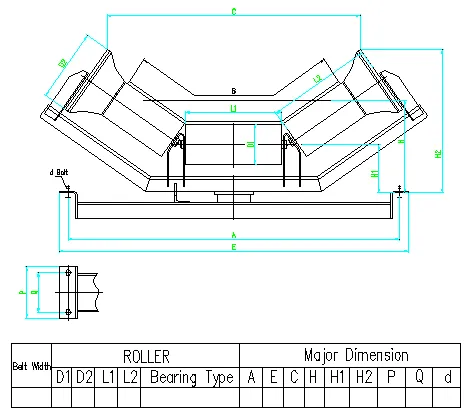 Afrikaans
Afrikaans  Albanian
Albanian  Amharic
Amharic  Arabic
Arabic  Armenian
Armenian  Azerbaijani
Azerbaijani  Basque
Basque  Belarusian
Belarusian  Bengali
Bengali  Bosnian
Bosnian  Bulgarian
Bulgarian  Catalan
Catalan  Cebuano
Cebuano  Corsican
Corsican  Croatian
Croatian  Czech
Czech  Danish
Danish  Dutch
Dutch  English
English  Esperanto
Esperanto  Estonian
Estonian  Finnish
Finnish  French
French  Frisian
Frisian  Galician
Galician  Georgian
Georgian  German
German  Greek
Greek  Gujarati
Gujarati  Haitian Creole
Haitian Creole  hausa
hausa  hawaiian
hawaiian  Hebrew
Hebrew  Hindi
Hindi  Miao
Miao  Hungarian
Hungarian  Icelandic
Icelandic  igbo
igbo  Indonesian
Indonesian  irish
irish  Italian
Italian  Japanese
Japanese  Javanese
Javanese  Kannada
Kannada  kazakh
kazakh  Khmer
Khmer  Rwandese
Rwandese  Korean
Korean  Kurdish
Kurdish  Kyrgyz
Kyrgyz  Lao
Lao  Latin
Latin  Latvian
Latvian  Lithuanian
Lithuanian  Luxembourgish
Luxembourgish  Macedonian
Macedonian  Malgashi
Malgashi  Malay
Malay  Malayalam
Malayalam  Maltese
Maltese  Maori
Maori  Marathi
Marathi  Mongolian
Mongolian  Myanmar
Myanmar  Nepali
Nepali  Norwegian
Norwegian  Norwegian
Norwegian  Occitan
Occitan  Pashto
Pashto  Persian
Persian  Polish
Polish  Portuguese
Portuguese  Punjabi
Punjabi  Romanian
Romanian  Russian
Russian  Samoan
Samoan  Scottish Gaelic
Scottish Gaelic  Serbian
Serbian  Sesotho
Sesotho  Shona
Shona  Sindhi
Sindhi  Sinhala
Sinhala  Slovak
Slovak  Slovenian
Slovenian  Somali
Somali  Spanish
Spanish  Sundanese
Sundanese  Swahili
Swahili  Swedish
Swedish  Tagalog
Tagalog  Tajik
Tajik  Tamil
Tamil  Tatar
Tatar  Telugu
Telugu  Thai
Thai  Turkish
Turkish  Turkmen
Turkmen  Ukrainian
Ukrainian  Urdu
Urdu  Uighur
Uighur  Uzbek
Uzbek  Vietnamese
Vietnamese  Welsh
Welsh  Bantu
Bantu  Yiddish
Yiddish  Yoruba
Yoruba  Zulu
Zulu Understanding the Functionality and Design of Head Pulleys in Belt Systems and Conveyor Applications
Understanding Head Pulley Systems An Essential Component in Mechanical Systems
In the realm of mechanical engineering and lifting technology, the head pulley system holds a vital position. Often utilized in various industrial applications, the head pulley plays a crucial role in material handling systems, such as conveyor belts, where it serves to redirect and transfer materials efficiently. This article delves into the mechanics, applications, and benefits of head pulley systems.
What is a Head Pulley?
A head pulley is a type of pulley that is typically located at the top end of a conveyor system. It is designed to drive the belt and facilitate the movement of materials from one point to another. The head pulley is usually powered by a motor or a gearbox, which provides the necessary force to move the belt forward. As the belt rotates around the head pulley, it lifts materials from the loading area and transports them to the desired unloading point.
Mechanics of Head Pulley Systems
The operation of a head pulley system is relatively straightforward yet highly effective. The primary components include the pulley itself, the conveyor belt, and the drive mechanism. When the motor powers the pulley, it causes the belt to move in a continuous loop. The friction between the belt and the head pulley is crucial, as it ensures that the belt maintains its grip and doesn’t slip off during operation.
Given their critical role, the design of head pulleys varies based on the specific requirements of the conveyor system. Some head pulleys are designed for heavy-duty applications, while others are tailored for lighter tasks. The material used for the pulley, the diameter, and the shape can all influence the efficiency and durability of the pulley system.
Applications of Head Pulleys
head pulley

Head pulley systems are widely used across various industries, including mining, agriculture, manufacturing, and logistics. In mining, for instance, head pulleys are essential for transporting ores and minerals from extraction points to processing facilities. In manufacturing, they facilitate the movement of goods through assembly lines, ensuring a smooth flow of production.
Moreover, in agriculture, head pulleys help in the movement of grain and other produce, making it easier to handle bulk materials. In logistics and warehousing, they play a pivotal role in distributing goods, enhancing the efficiency of operations and reducing manual labor.
Advantages of Using Head Pulley Systems
The integration of head pulley systems in material handling comes with numerous benefits. Firstly, they significantly enhance efficiency by automating the movement of materials, thereby reducing the time and labor required for transportation. This automation allows businesses to improve productivity and optimize workflows.
Secondly, head pulleys are designed for durability and reliability. Constructed from robust materials, they can withstand harsh operational conditions and heavy loads, minimizing the risk of breakdowns and maintenance costs.
Additionally, head pulley systems contribute to safety in the workplace. By mechanizing the transportation of heavy loads, they reduce the risk of injuries associated with manual lifting and movement. This leads to a safer working environment and can decrease the incidence of workplace accidents.
Conclusion
In summary, head pulley systems are an integral component of modern mechanical and industrial operations. Their ability to efficiently transport materials, coupled with their advantages in productivity, durability, and safety, make them indispensable in various applications. As industries continue to evolve and demand greater efficiency, the significance of head pulleys in driving innovations and improvements in material handling cannot be overstated. Understanding their mechanics and applications will enable organizations to harness their full potential and optimize their operational processes.
-
Revolutionizing Conveyor Reliability with Advanced Rubber Lagging PulleysNewsJul.22,2025
-
Powering Precision and Durability with Expert Manufacturers of Conveyor ComponentsNewsJul.22,2025
-
Optimizing Conveyor Systems with Advanced Conveyor AccessoriesNewsJul.22,2025
-
Maximize Conveyor Efficiency with Quality Conveyor Idler PulleysNewsJul.22,2025
-
Future-Proof Your Conveyor System with High-Performance Polyurethane RollerNewsJul.22,2025
-
Driving Efficiency Forward with Quality Idlers and RollersNewsJul.22,2025





























